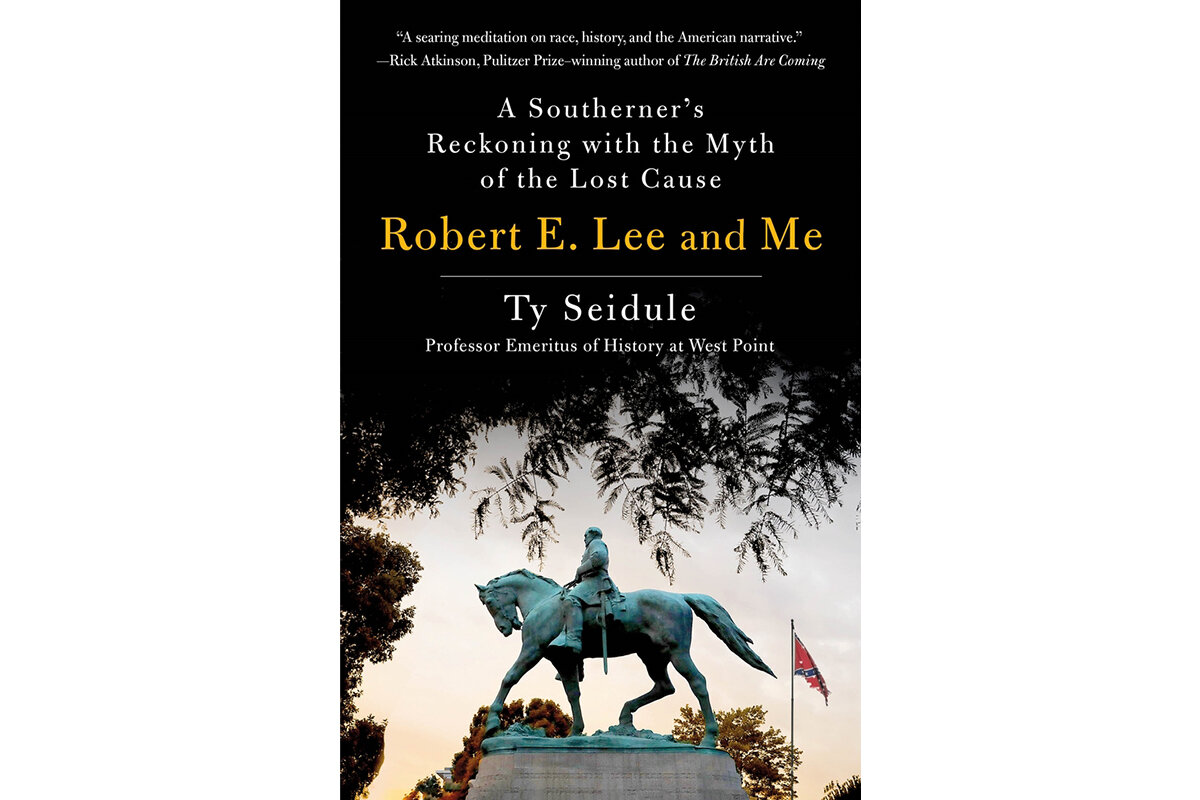‘Robert E. Lee and Me’ dismantles Confederate mythology
Loading...
He aspired to be a “Virginian gentleman” throughout most of his life and career – but along the way, Ty Seidule began to question the tenets of his culture and his idols, namely Confederate Gen. Robert E. Lee and the “Lost Cause” myth. Seidule, a retired brigadier general in the U.S. Army and professor emeritus of history at the U.S. Military Academy at West Point in New York, journeyed from cockeyed ignorance to ever-increasing cognitive dissonance to finally horror at his white supremacist origins. His new book, “Robert E. Lee and Me: A Southerner’s Reckoning with the Myth of the Lost Cause,” offers hope that those who attempt to set the record straight about racism in the United States will indeed be listened to and believed.
“History is dangerous. It forms our identity, our shared story. If someone challenges a sacred myth, the reaction can be ferocious,” so writes Seidule, who adds that he has received death threats and was forced to retire from the Army after 36 years because of the book he’s written. Despite its very personal pathos, the book does not simply knock his boyhood idol off the pedestal; rather, it gives an uncompromising, searing, and full-throated indictment of a historically misrepresented man and myth, along with the many institutions that have given currency to all of it through the years.
Seidule begins with his childhood in Alexandria, Virginia, and shares snippets of his middle-class family life, his schooling, the books and movies he consumed, and the sports he played. He also relates the mindset and beliefs he held then and contrasts them with the knowledge and cultural context he gained after studying history. For example, he learned as an adult that in the 1800s, Alexandria was home to one of the country‚Äôs largest slave prisons, from which enslaved people were shipped into the Deep South.¬Ý
Later, Seidule confronts the ‚Äúmassive resistance to school desegregation‚Äù in Virginia and finds a local hero in Samuel Tucker, an African-American lawyer who challenged Alexandria‚Äôs Jim Crow laws in the 1930s. He recounts his own attendance at ‚Äúseggie‚Äù academies ‚Äì private schools set up to avoid desegregation ‚Äì and notes that non-church affiliated private school enrollment in the former Confederate states increased by 250 percent between 1961 and 1970. ‚ÄúTo be clear, the South of my birth was no democracy,‚Äù he concludes. Instead, it was ‚Äúa racial police state.‚Äù¬Ý¬Ý
From Alexandria, Seidule’s family moved to Monroe, Georgia, also known as “Lynchtown.” Seidule remembers the ubiquity of Confederate iconography there. “White southerners continue to focus on a four-year period when they fought a rebellion to create a slave republic and lost badly,” he writes. Subsequently, he describes the ignominious history of the Ku Klux Klan and the many lynchings that were carried out in the state. (Between 1877 to 1950 there were 589 recorded in Georgia; the last was recorded in 1981.)
Still bent on becoming the quintessential Virginia gentleman, Seidule entered Washington and Lee University in Lexington, Virginia ‚Äì wherein Lee Chapel, the ‚ÄúShrine of the South,‚Äù is located. He provides a detailed account of the university‚Äôs connection to the Confederate general, who served as its president from 1865 until his death in 1870. And he discusses the school‚Äôs culture: Students literally ‚Äúgenuflected at the altar of Saint Bob, as we called him.‚Äù Washington and Lee, an all-male, mostly white university, did not graduate an African-American student until 1966.¬Ý
To pay for college, Seidule signed up for an ROTC scholarship; at his U.S. Army commissioning ceremony, he took the Ironclad Oath of Office in Lee Chapel on the Washington and Lee campus, “surrounded by Confederate flags, next to a portrait of Lee in Confederate gray.”
In the Army, Seidule bounced around the world, from fort to camp to duty station. In the process, he realized his postings were a litany of Confederate names. From Lee, Bragg, Benning, and Gordon, to Beauregard, Hood, and Pickett, he shares the lingering Confederate history literally written on the walls – left undisturbed because, as Seidule opines, the Army “finds Civil War history too dangerous and would prefer to punt the issue to politicians.” It’s the persistent encounters with Lee’s name and face on barracks, camp signs, monuments, buildings, and streets – even at West Point itself – that finally sets off Seidule’s inner alarm.
In the book’s final chapter, Seidule builds his case that Lee committed treason to preserve slavery. He argues that Lee’s undeniable bigotry makes him a figure to be condemned, not worshipped. “Lee believed in racial control through slavery. He fought to create a slave republic because he believed in slavery,” he writes. Seidule argues that even in defeat, Lee was unbowed: “During his first interview days after the war, [Lee] said, ‘The Negroes must be disposed of.’”
In his conclusion, Seidule has one hope and one bit of wisdom. The hope: “that the Lost Cause will not infect my grandchildren.” The key, he believes, is historical knowledge. “The only way to prevent a racist future,” he writes, “is to first understand our racist past.”





